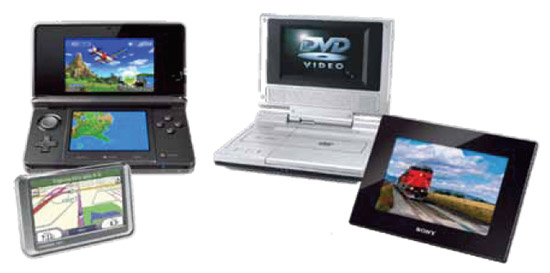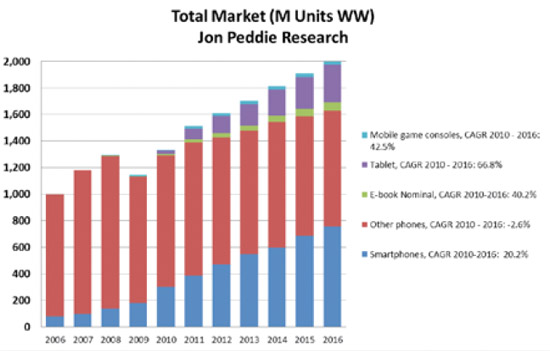I have referred to the smart phone as a PC—personal companion. But now have expand that title to include the tablet, it too is a PC. So, maybe a smartphone is a PPC—personal pocket companion. As a matter of fact, we have lots of personal companions, battery powered mobile devices.

The demand for these devices has exploded creating a market for over two billion processors.:
- Over three quarters of a billion smartphones will ship in 2016
- Feature and other phones will hit 869 million units in 2016
- Almost 300 million tablets will ship in 2016
- E-book readers shipments could reach 100 million a year by 2016
- Handheld game consoles will hit 91 million by 2016
The processors powering these devices are truly amazing, consuming remarkably little power, built in the latest nanometer technology, and delivering unbelievable performance and functionality. And although all of the devices will share some functionality and capabilities, no single device will kill any of the others … at least not immediately. Each device will have a different form, primary function, and price. All will be connected all the time, and most of them will have 3D displays and cameras.
More than 16 processor companies and five suppliers of IP are chasing this market. Compared to the four or five processor companies chasing the PC market that makes the mobile processor market over populated by four-to-one— is a consolidation coming? Are there too many suppliers chasing the same customers?
The sharp growth the devices have enjoyed recently took a long time to get started. For example, the first standalone tablet was the GRiDPad in 1989 (which presumably gave Jeff Hawkins the founder of Palm, the idea for the Palm which was realized in 1992.)
In 2001 Microsoft reinvented the concept calling it a “Pen Computer”. And then in 2010 Apple brought the category to life with the iPad. The first smartphone was the IBM Simon in 1992, then Nokia entered the market 1996 and since then, the segment has taken off like a rocket.
The concept for the e-book came from Michael Hart in 1971, and the first battery powered standalone unit was the Rocket eBook in 1998, but it was the Kindle that lit up the market in 2007.
Other popular mobile devices like game consoles, navigation units, portable DVD players, and digital picture frames all use high resolution screens and sophisticated SoCs.
All the pieces needed to make powerful, small devices with low power consumption for longer battery operation have come together and conveniently at the same time as demand for such devices is ready for take-off.
And since there’s no Moore’s law for batteries, the gain in battery life has come from the clever SoC designs and the shrinking of the size of the transistors thanks to Moore’s Law. All of these devices touch our lives in some important way or another—they’re all personal devices and just as a motorcycle shares some of the features of a car and truck, we’re not going to replace one with the other. So, we won’t replace any of these personal devices with just one thing. We want all our toys. And lots of batteries.
